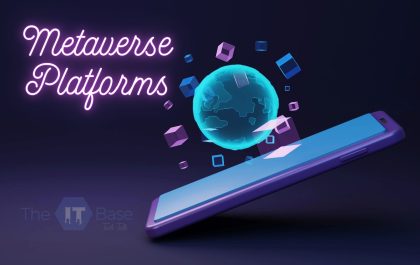In today’s increasingly interconnected world, fostering a diverse and inclusive work environment is more important than ever. When businesses invest in cultivating an inclusive workplace, they not only stand to benefit from better innovation and increased employee engagement, but also position their organizations as attractive employers. In this era of social awareness, workplace diversity and inclusion have become essential for human resources (HR) initiatives. Let’s delve into the importance of diversity and inclusion, and how HR teams can successfully implement these strategies into their workplaces.
Table of Contents
Why Diversity and Inclusion Matters
Workplace diversity and inclusion boost creativity, innovation, employee satisfaction, and business outcomes. A diverse workforce provides a wider array of perspectives, helping organizations better understand customer needs and solve complex problems. In addition, inclusivity has been linked to higher employee engagement, resulting in increased productivity and retention.
HR’s Role in Promoting Diversity and Inclusion
Human resources teams have the unique opportunity to be the driving force behind workplace diversity and inclusion. HR professionals can implement policies and practices that encourage recruitment and advancement based on merit, rather than factors such as race, gender or age. By creating an inclusive workplace culture, HR can ensure all employees feel valued, respected, and able to fully contribute their skills and talents.
In order to drive successful diversity and inclusion initiatives, HR professionals should also have a strong understanding of human capital management strategies, which focus on optimizing the value and performance of an organization’s employees. This knowledge can help HR teams develop improved recruitment, development, and retention practices as they work towards creating an inclusive workplace culture.
Attracting a Diverse Workforce
- Reaching Out to Different Communities: Organizations can partner with colleges, universities, and community organizations to reach out to underrepresented groups and promote job opportunities within their companies.
- Job Description Language: Crafting inclusive job descriptions using gender-neutral language can help attract diverse candidates.
- Eliminate Bias in the Recruitment Process: Using blind resume and application screening processes can reduce unconscious biases, resulting in a wider array of talent being considered for job openings.
Developing an Inclusive Work Culture
- Training Programs: Implement ongoing employee training programs designed to foster understanding of the value of diversity and inclusion, as well as develop cultural competency.
- Employee Resource Groups (ERGs): Encourage the establishment of ERGs, which are voluntary, employee-led groups that support a diverse and inclusive workplace culture.
- Inclusive Leadership: Leaders should model inclusive behaviors and actively seek input from diverse team members, promoting a culture of open communication.
Maintaining Clear Communication Channels
Transparency and open communication are key to creating an inclusive workplace culture. HR teams should ensure their organization maintains a clear system for reporting harassment or discrimination incidents and sharing updates on diversity and inclusion efforts. Employees should feel comfortable providing feedback and suggesting improvements in policies and practices.
Assessing Progress and Impact
An essential part of implementing diversity and inclusion initiatives is periodic measurement of progress and impact. HR teams should monitor demographics and employee experience through engagement surveys, providing insights into which initiatives are more effective and identifying areas for improvement.
The Importance of Recognizing and Celebrating Diversity
Acknowledging and celebrating the different backgrounds of employees can help create a culture where diversity is valued. Encourage teamwork and collaborative projects that leverage the unique experiences, opinions, and ideas of a diverse workforce. HR teams can also organize events and initiatives that celebrate cultural differences and raise awareness about diversity-related topics, fostering a stronger sense of understanding and respect among team members.
Providing Inclusive Benefits and Policies
An organization’s benefits and policies should reflect its commitment to diversity and inclusion. HR professionals need to ensure that employee benefit programs, such as parental leave policies and flexible working arrangements, cater to the diverse needs of the workforce. This includes consideration of factors such as varying cultural, religious, and family backgrounds. Inclusive policies should empower employees to balance their individual needs with their professional commitments, promoting a healthier work-life balance.
Addressing Unconscious Bias
Unconscious bias can have a significant impact on decision-making processes and workplace interactions. HR teams should address this challenge by implementing strategies to raise awareness of such biases and provide employees with the tools to manage them. This may include workshops, training sessions, and discussions that help employees identify personal biases and develop strategies for overcoming them. Addressing unconscious bias is a crucial step towards creating a more equitable and inclusive workplace environment.
Final Thoughts
Inclusion matters now more than ever. By cultivating diversity and inclusion through thoughtful human resources initiatives, organizations can create an environment where all employees can thrive, ultimately driving better outcomes for both the employees and the business itself. With a proactive approach to diversity and inclusion, HR professionals can play a crucial role in building an inclusive, high-performing workforce that stands out in a competitive market.
Related posts
Hot Topics
Metaverse Platforms for Virtual Workspaces
Ever felt like your office is stuck in the Stone Age? Tired of endless Zoom calls that feel about as…
IoT Protocols: The Language of Smart Devices
Ever wonder how your smart fridge talks to your phone? Or how does your fitness tracker know to buzz when…



